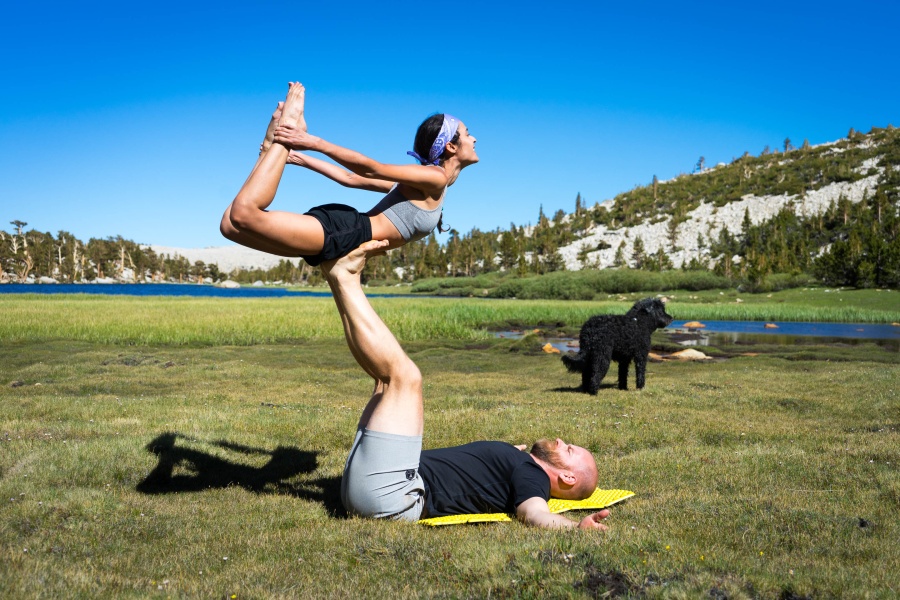For Fourth of July this year some friends and I backpacked up to the Cottonwood Lakes area in the John Muir Wilderness. What a great way to spend the holiday!

From Krystof with Love
For Fourth of July this year some friends and I backpacked up to the Cottonwood Lakes area in the John Muir Wilderness. What a great way to spend the holiday!

Where Good Ideas Come from: The Natural History of Innovation
by Steven Johnson
Goodreads link
We have this popular notion of the inventor as a lone genius laboring in the wee hours of the night in his garage until finally Eureka! - a flash of insight and a new technology is born, to be patented and sold for profit.
But is that really how innovation works? Where do good ideas come from, and what kinds of environments best support innovation?
That’s core question that Steven Johnson tries to answer in this book.
The Adjacent Possible is a framework for thinking about the space of innovations that are possible with at a particular point of time.
Most new good ideas come from taking other good ideas and recombining them in novel ways to create something new. To create the printing press, Gutenberg combined technology from winemaking presses, movable type from blacksmithing, paper, ink etc.
Think of the status quo in a specific area like a room with four doors. The adjacent possible are the rooms immediately next to this room. Each time one door is opened, the adjacent possible expands - opening one door leads to three more doors that can be opened next.
Accelerate: Building and Scaling High-Performing Technology Organizations
by Nicole Forsgren, Jez Humble, and Gene Kim
Goodreads link
Software is eating the world - and has been, for quite a while. No matter the organization or industry, software has a huge impact on the organization’s ability to meet its goals. If that is the case, then delivering software better would help organizations meet their goals better.
So how do we deliver software better?
That’s the question posed by the authors of Accelerate: Building and Scaling High-Performing Technology Organizations. To find out, they conducted research, which they published in annual “State of DevOps” reports. You can read the full 2019 State of DevOps report here. The data for the 2014-2017 reports was then compiled into this book.
The authors find that the following behaviors positively positively impact software delivery, which in turn has “a measurable impact on an organization’s profitability, productivity, and market share”, as well as “on customer satisfaction, efficiency, and the ability to achieve organizational goals.”
All production artifacts - that means not just code (which is the bare minimum), but also system and application configurations, and scripts for build automation.
Daring Greatly: How the Courage to Be Vulnerable Transforms the Way We Live, Love, Parent, and Lead
by Brené Brown
Goodreads link
New York City, circa 2013. It’s a cold and rainy day, and so I’m taking the subway home from work rather than biking. I live in Williamsburg and thus am inevitably shoved onto a packed L train. I stand face to face with a cute girl around my age, and she laughs at my jokes, and we strike up a short conversation.
My stop is coming up, and so, being single, I have a decision to make. Do I ask for her number? Here, on a crowded subway train where I would struggle to even get my phone out to save it? It seems like an unwise choice for a girl to give her number to a stranger she met on the subway just a few minutes earlier. The odds are not good.
What guy asks a girl for her number in a situation like that?
This guy.
The title of Brené Brown’s book comes from Teddy Roosevelt’s Citizenship in a Republic speech, and specifically the notable Man in the Arena passage, which is so good I’ll reproduce it here in its entirety:
It is not the critic who counts; not the man who points out how the strong man stumbles, or where the doer of deeds could have done them better. The credit belongs to the man who is actually in the arena, whose face is marred by dust and sweat and blood; who strives valiantly; who errs, who comes short again and again, because there is no effort without error and shortcoming; but who does actually strive to do the deeds; who knows great enthusiasms, the great devotions; who spends himself in a worthy cause; who at the best knows in the end the triumph of high achievement, and who at the worst, if he fails, at least fails while daring greatly, so that his place shall never be with those cold and timid souls who neither know victory nor defeat.
The Mae Hong Son loop in Northern Thailand is famous in motorcycling circles, and beyond them. The core loop covers about 600 km split over four stages on excellent, winding roads. I rented a bike in Chiang Mai for two weeks and decided to do an extended version of the loop.
Here’s a video: